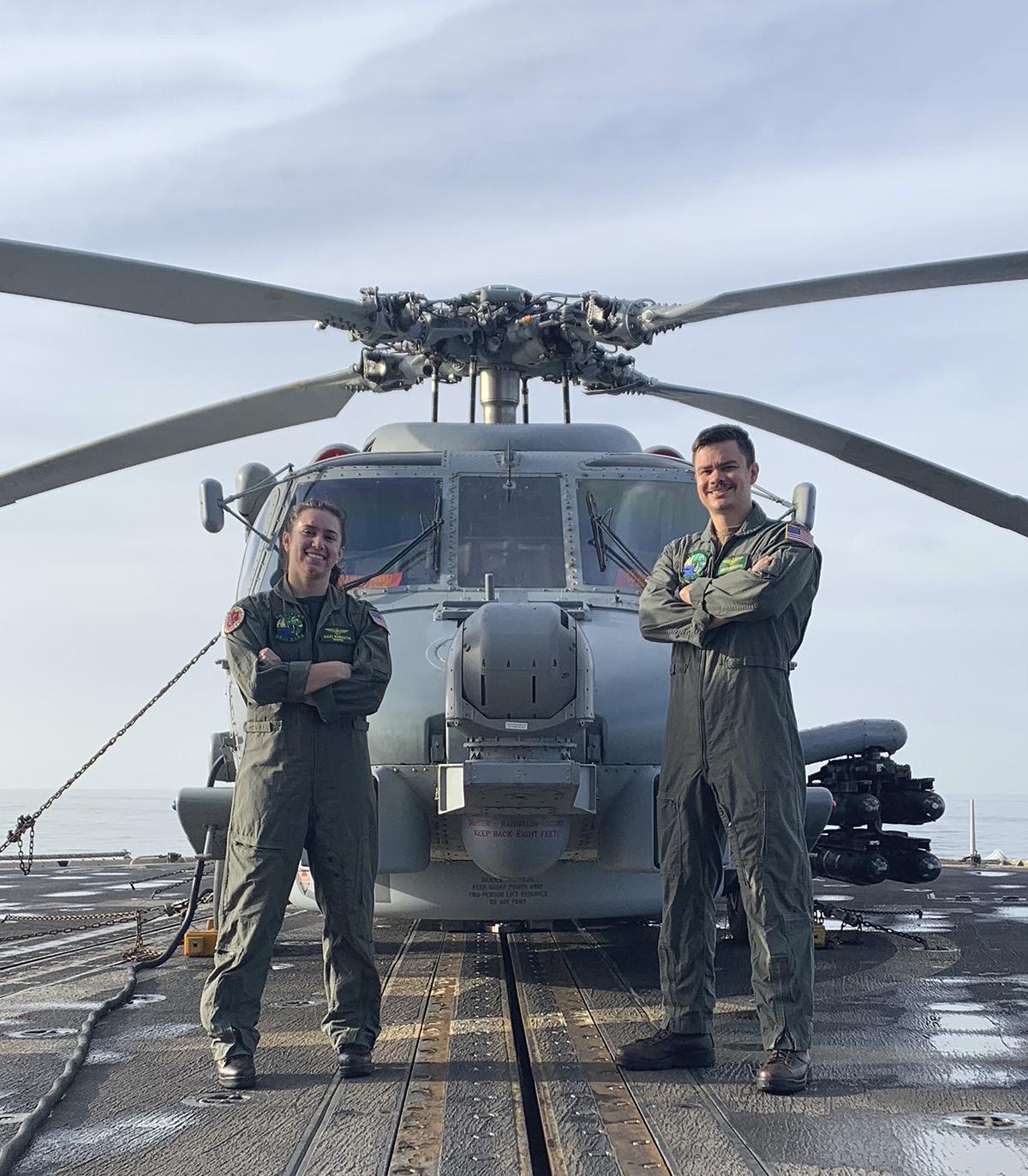Focus - UAVs and You Rotary Wing Aviation Can Lead the Way to Think Outside the Box to Defeat Deadly Sea Mines: A Perspective By CAPT George Galdorisi, USN (Ret.)
T
he Navy rotary wing community has been in the business of providing a means of countering the threat of sea mines for many decades. I have a bit of a personal connection here. My brother-in-law was an “HM guy,” and participated in mine clearing operations in the Suez Canal in the 1970s. During my time in HSL-32 in the 1970s, the HM hangars at NAS Norfolk, Virginia were across the tarmac from our hangar, and I had the chance to gain an understanding of what the HM bubbas did to complete their mission. Most readers of Rotor Review know that our community is undergoing a huge transition in how we conduct airborne mine-countermeasures, or AMCM. Our venerable MH-53E Sea Dragon AMCM aircraft (aptly nicknamed “Big Iron”) is scheduled to sunset this decade, and the MH-60S will become the Navy’s primary AMCM helicopter as it gets outfitted with the ALMDS near-surface mine detection system and the AMNS airborne mine neutralization systems. These assets are part of an overarching MCM Mission Package that will be carried by some number of Littoral Combat Ships.
mine warfare has been an important element of naval warfare. Indeed, while the first attempt to deliver the Bushnell Keg from America’s first combat submarine, the Turtle, against a British warship in 1776 failed, subsequent attempts to deliver these early mines were successful. Not only did they damage and sink a British schooner and kill several British seamen, but If you read the last issue of Rotor Review, you likely caught the threat caused British capital ships-of-the-line to redeploy thoughtful articles by Lieutenant Joshua Price and Lieutenant to avoid the threat. Rob “OG” Swain that offered good suggestions for the trajectory of our HSC Community, especially in the area of MCM. In Over 150 years ago Admiral David Farragut became spite of what the MCM Mission Package—including the MH- famous for "damning torpedoes" (mines) at the entrance to 60S equipped with the ALMDS and AMNS—will bring to the Mobile Bay during the Civil War. Indeed, in the early stages Fleet, the Navy still has a deficit in its MCM capabilities. of the Civil War, Admiral Farragut wrote to Secretary of the Navy Gideon Welles, about the sea mine threat posed by the As Lieutenant Price put it in his article, “The demand Confederacy, stating, “I have always deemed it unworthy of a for a rapidly-deployable MCM asset with over-the-horizon chivalrous nation, but it does not do to give your enemy such capability has never been higher.” He also noted that, “Private a decided superiority over you.” Farragut’s warning was eerily industry has promised over-the-horizon full detect-to-engage prescient. capabilities from unmanned surface and airborne platforms.” It seems to me that we would be well-served to lean into this The use of mines and countermeasures to mines have figured kind of capability. But before we get too excited about laying significantly in every major armed conflict and nearly every yet another mission on the HSC Community (something regional conflict in which the United States has been involved Lieutenant Swain cautions against in his article) it is worth since the Revolutionary War. Mine warfare is an essential asking the question: Is the adversary mine challenge really warfare capability integral to the ability of naval forces to open something that demands a great deal of attention and resources? and maintain sea lines of communication and to dominate the littoral battlespace. The Naval Mine Challenge Today A great deal of ink has been spilled regarding the threat Modern naval mines were widely used for the first time over of adversary sea mines, so I will just surf the wave tops in a century ago, during the Russo-Japanese war (1904-1905). summarizing this challenge. First, it is important to recall These were contact mines, floating in shallow water and that mine warfare is not new. Precursors to naval mines were kept in place with an anchor and chain. When the tide was first invented by innovators in Imperial China. The first plan right they would be just below the surface, ready to explode for a sea mine in the West was drawn up by Ralph Rabbards, whenever struck by a ship. Some 2,000 of these mines were who presented his design to Queen Elizabeth I of England in used to destroy sixteen ships during the Russo-Japanese war. 1574. Since the invention of the Bushnell Keg (a watertight That is one ship lost for every 125 mines used. keg filled with gunpowder that was floated toward the enemy, detonated by a sparking mechanism if it struck a ship) in 1776, Rotor Review #153 Summer '21
32









































